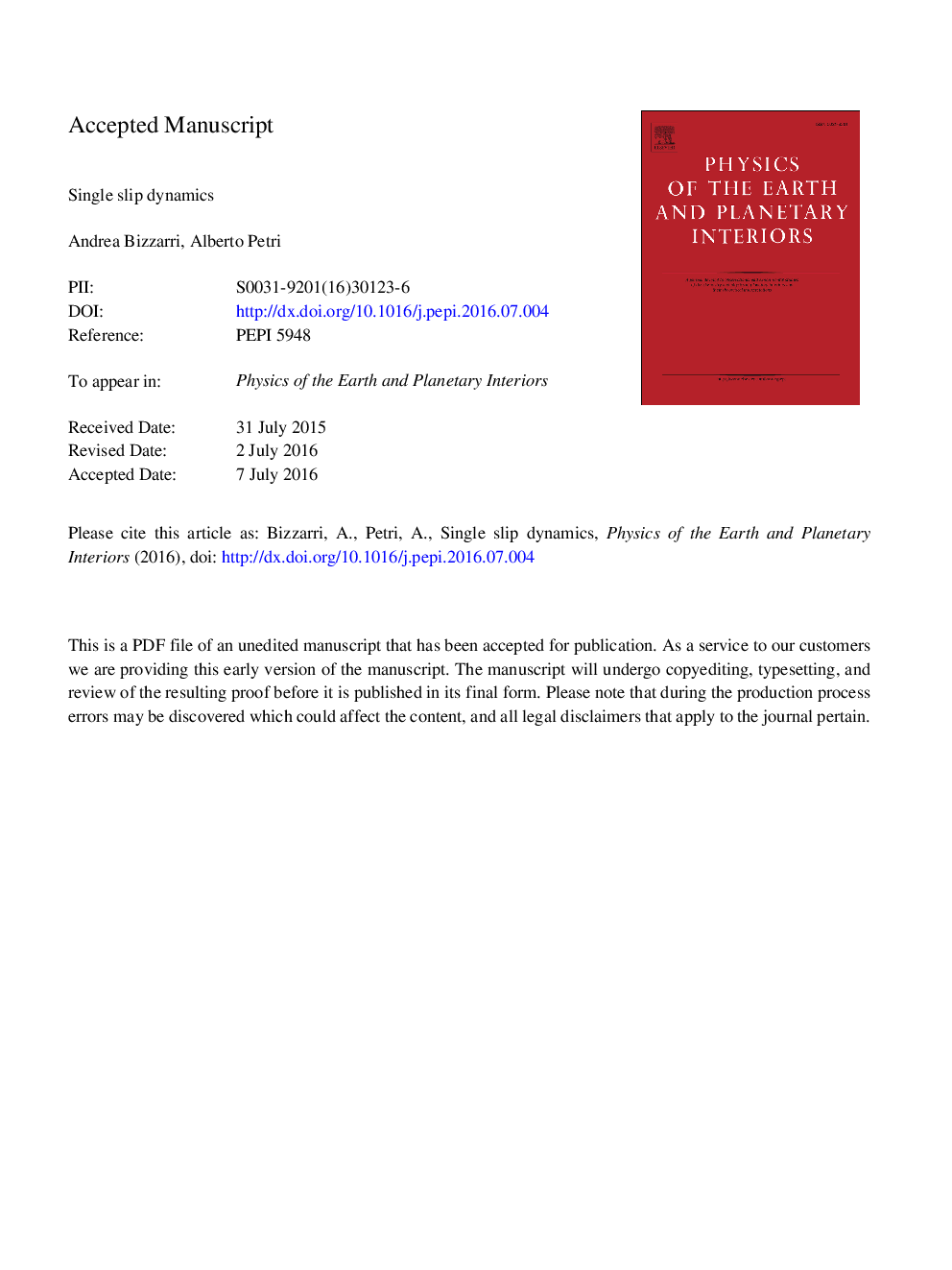| Article ID | Journal | Published Year | Pages | File Type |
|---|---|---|---|---|
| 5787379 | Physics of the Earth and Planetary Interiors | 2016 | 35 Pages |
Abstract
In the present paper we consider a 1-D, single spring-slider analog model of fault and we solve the equation of motion within the coseismic time window. We incorporate in the dynamic problem different rheologic behavior, starting from the Coulomb friction (which postulates a constant value of the dynamic resistance), then the viscous rheology (where the friction resistance linearly depends on the sliding speed), and finally a version of the more refined rate-and state-dependent friction law. We present analytical solutions of the equation of motion for the different cases and we are able to find the common features of the solutions, in terms of the most important physical observables characterizing the solutions of a 1-D dynamic fault problem; the peak slip velocity, the time at which it is attained (or, in other words, the so-called rise time), the total cumulative slip developed at the end of the process (assumed to occur when the sliding speed vanishes or become comparable to its initial value). We also extract some useful dependences of these quantities on the parameters of the models. Finally, we compare the spectral behavior of the resulting sliding velocity and its fall-off at high frequencies.
Keywords
Related Topics
Physical Sciences and Engineering
Earth and Planetary Sciences
Geophysics
Authors
Andrea Bizzarri, Alberto Petri,
